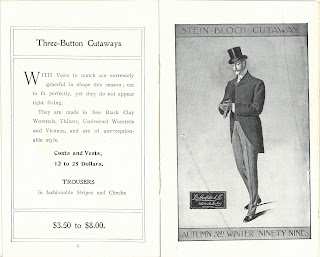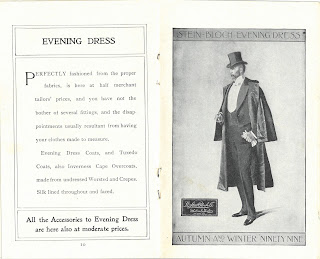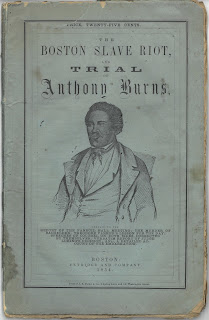 The fall colors are popping and we are not likely to see many days with temperatures in the 70s until Spring. So, it is time to pull out the fall wardrobe. We are a bit fusty in our fashion, so we'll go with 1899.
The fall colors are popping and we are not likely to see many days with temperatures in the 70s until Spring. So, it is time to pull out the fall wardrobe. We are a bit fusty in our fashion, so we'll go with 1899.Our guide is Gentlemen's Attire, Described and Illustrated, Autumn & Winter 1899-1900, from Lothrops, Farnham and Company. We will need a "proper sack suit" and fashion demands diagonal serges for daily wear.
For slightly more formal occasions, the three-button cutaway is a must.
And, if we head out later, our evening dress has to be the latest style.
Don't forget, it is going to get cold soon, so we will top it all off with a "Very Stylish" overcoat!
To see all of the latest 1899 fashions ask for Rare HF6161.C44 L6.



